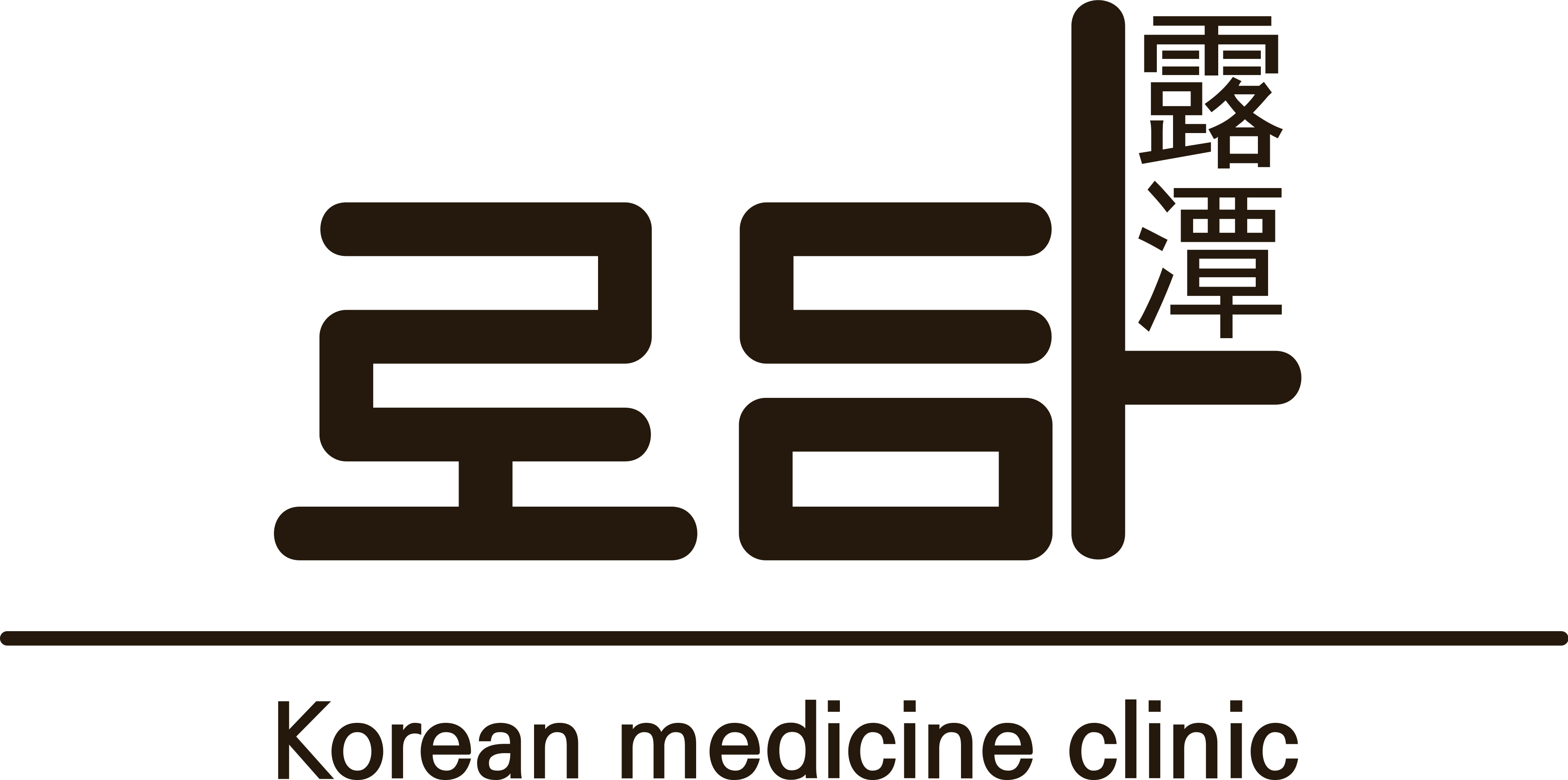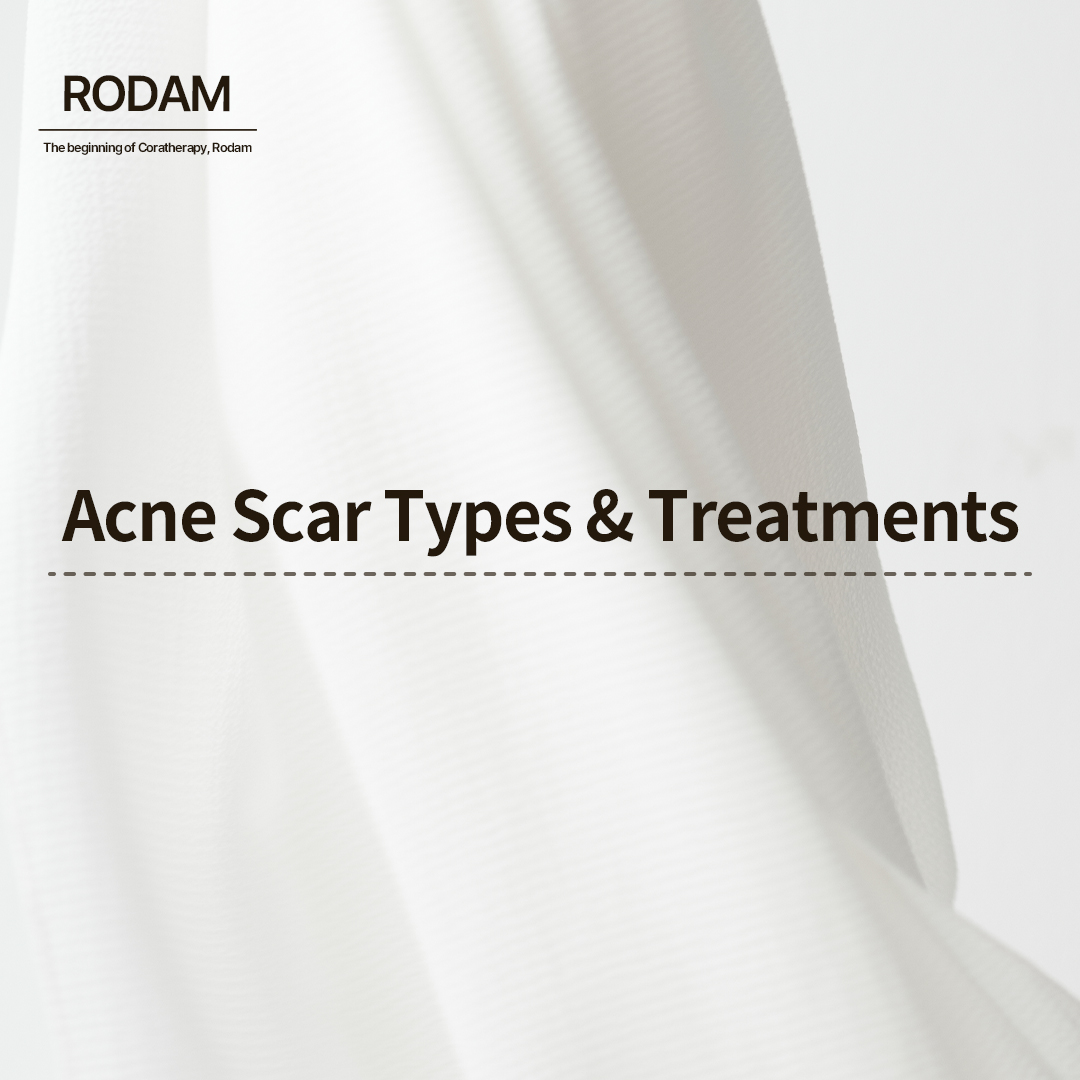
Types and Treatments of Acne Scars, Rodam Korean Medicine Clinic Coratherapy
Hello, this is Rodam Korean Medicine Clinic, the beginning of Coratherapy for removing scars.
The transitional season of autumn has begun.
During this time, the balance of oil and moisture in the skin can easily break down, weakening the skin barrier.
As a result, acne frequently occurs during this period.
Acne not only appears but, if not properly managed, can lead to scars, causing stress.
Among acne scars, pigmentation often fades naturally over time,
but depressed scars are difficult to heal naturally.
Therefore, medical intervention is necessary to treat such scars.
Today, we would like to introduce the types of depressed scars caused by acne and their corresponding treatments.
We hope this information will be helpful to those struggling with skin concerns.

Type 01 of Depressed Acne Scars: Boxcar Scars
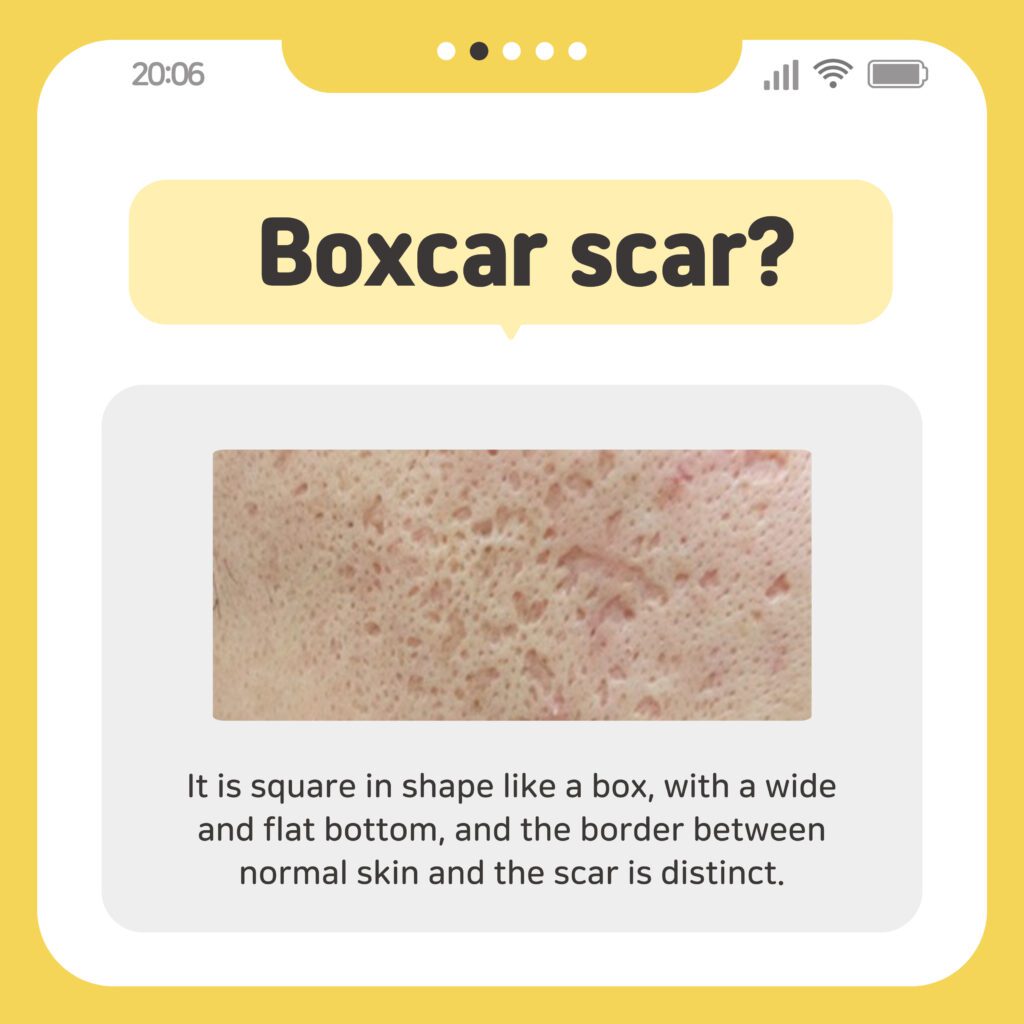
Depressed acne scars mainly occur when the skin tissue is damaged during the healing process of acne.
These scars are categorized into three main types,
and the first type, boxcar scars, refers to scars that resemble the shape of a box.
Boxcar scars appear as square or rectangular depressions with distinct and nearly vertical edges.
These scars make the skin surface uneven, disrupting the skin texture,
and they become more noticeable under light, causing aesthetic stress.
Type 02 of Depressed Acne Scars: Rolling Scars
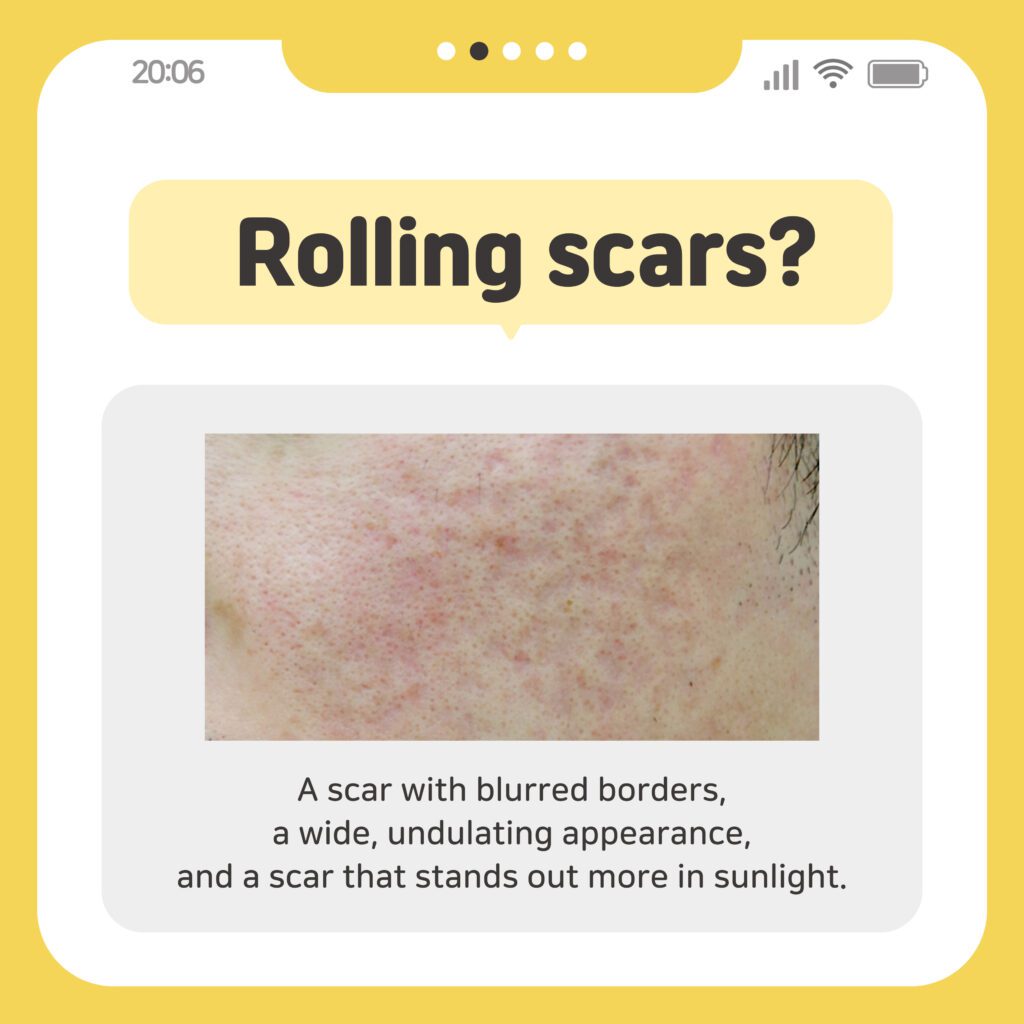
The second type, rolling scars, appear as wavy, undulating depressions.
The skin surface looks as if it is rippling like waves,
with indistinct boundaries and a broad, sunken appearance.
These scars commonly occur on thicker areas of the skin, such as the cheeks or jawline.
Compared to other scars, rolling scars cause less damage to the epidermis,
but fibrosis in the dermis layer reduces skin elasticity,
and impaired microcirculation can make the skin appear even more sunken.
Type 03 of Depressed Acne Scars: Ice Pick Scars

The last type, ice pick scars, are deep and narrow scars that look as if the skin was pierced with an ice pick.
These scars often form after severe acne, when the skin tissue is deeply damaged.
Ice pick scars are characterized by a narrow opening and a narrow base,
making them difficult to treat with conventional methods.
Among acne scars, they are the most challenging to treat.
Each treatment must be tailored to the depth of the scar,
and treatments like lasers or chemical peels have limitations.
For these types of depressed scars, a treatment that separates the adhered tissue
and promotes skin regeneration is necessary.
In such cases, we recommend Coratherapy.
What is Coratherapy?
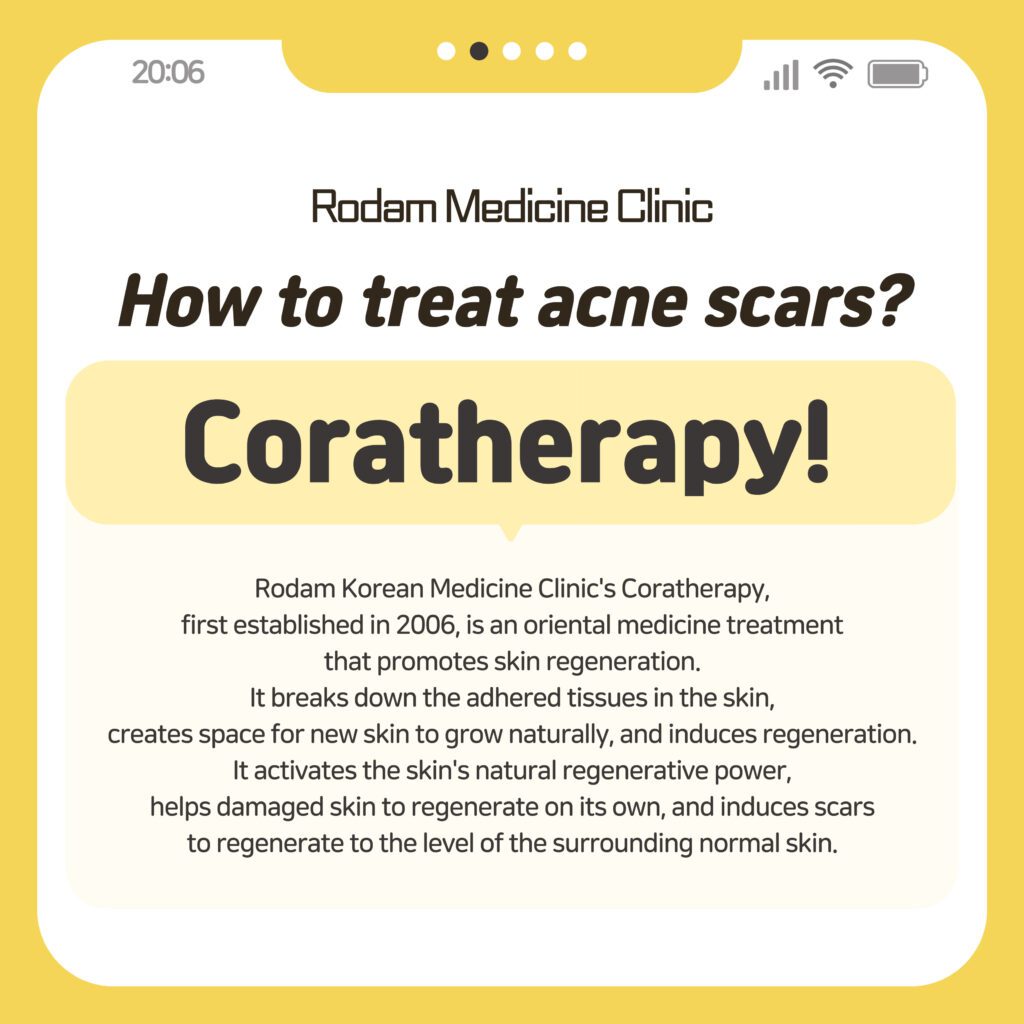
Coratherapy is a Korean medicine approach to scar treatment,
using needles to directly stimulate the scar itself to promote skin regeneration
and encourage new tissue to grow in the scarred area.
Rodam Korean Medicine Clinic’s Coratherapy, which began in 2006,
uses specially designed needles
to not just pierce the scar but sculpt it,
allowing treatment of depressed scars regardless of their shape.
Therefore, it is effective not only for acne scars but also for scars caused by chickenpox, shingles, or surgeries.
Additionally, Coratherapy stimulates the dermis layer during the procedure,
activating the skin’s regenerative power and encouraging the skin to fill in.
Since this treatment relies on the skin’s natural regenerative ability and regenerative substances without using drugs,
it minimizes concerns about allergies related to the treatment.

Today, we introduced the types of depressed acne scars
and the treatment method for them, Coratherapy.
Many people believe that once acne scars form, it is impossible to return to their previous skin condition,
causing significant stress.
However, with Coratherapy, it is possible to restore your skin.
If you wish to regain clear skin,
please feel free to visit Rodam.
Rodam Korean Medicine Clinic is always here
to help resolve your skin concerns.
